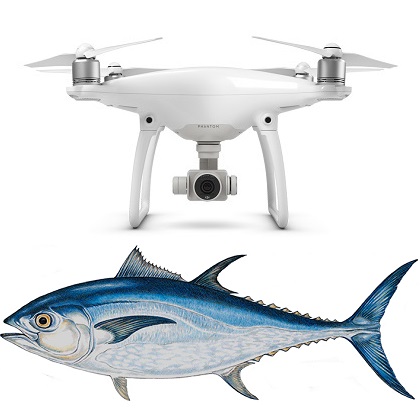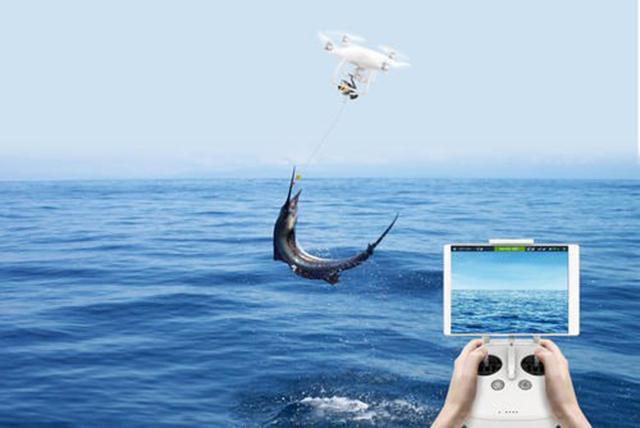
If you are a passionate fisherman, and you live in Australia you can use a drone for an aerial view of your property's waters. The drones can be equipped with a variety of features, including a GPS positioning system, a GPS receiver, a GPS receiver, a GPS payload release, and an angle adjustable camera. You can also buy fishing line that you can use to fish. These lines are highly stable and reliable. One example of such a drone is the SKY RIGGER.
SKY RIGGER, a drone fishing line, is available
The SKY RIGGER fishing line system for drones allows you fly fish and is flexible. The system features two rotating leg clamps that can attach to various drone models. The release mechanism has a bayonet style connection and a camlock arm to quickly open the line clamps. Sky RIGGER doesn't require batteries unlike other drones. This drone can take all kinds of fishing techniques and is safe.
The SKY RIGGER's automatic release mechanism allows for the release of the fly when a fish strikes it. You can also manually release the line using your hand or rod. This feature is standard on all SKY RIGGER models. It is recommended that you purchase a Phantom 3 before purchasing the new SKY RIGGER. Here are some pros & cons of the new line.
It comes with a mechanical payload.
The mechanical payload release is a key feature of a drone. Many of them are designed to allow the angler to release the fishing line with ease. Some models don't have a release mechanism. Instead, users must "yank the fishing line" to free the drone. This can be frustrating, especially for people who aren’t comfortable using their fingers to release the line.

The payload release mechanism is another important feature. Payloads should be capable of releasing the drone's line once the fish has been caught. Before you try this method, it is important that you practice catch-and-release fishing. The fish cannot be pulled to shore and then released back into the water. Many have had positive experiences with the DJI Phantom. However, the technology is not yet up to the standard of other fishing drones.
It comes with a GPS location system
Rippton, a joint venture between Australia and the Netherlands that specializes on technology-oriented fishing products, is called Rippton. Its goal is to improve anglers' success rates by developing products that will enhance the experience of fishing. Rippton’s Mobula drone comes with a GPS position system and remote release. The Mobula can hold bait at the surface, provide resistance to kite clips, and be environmentally friendly.
It weighs only 3 pounds and can fly for as long as 18 minutes. It has a high tech GPS system that can be controlled from as far as 2,000 meters away. The range is 1000 meters or half a miles. Intelligent flight modes are also available. Its point-of-interest feature allows it to capture high quality images of its surroundings. You can see great images of fish thanks to its high-resolution digital camera.
It comes with a failsafe feature
Aerokontiki's fisherman drone has a failsafe function: It monitors battery levels and releases fishing line when necessary. In case of battery failure, it will land back on dry ground to continue its mission. It can be operated anywhere with its industrial-grade flight control system. You can also use this drone in watery areas.

FAQ
Is it possible to fly my drone in my backyard?
Yes! These are also known as UAVs (unmanned aerial vehicle). There are many kinds of drones today. They range from small quadcopters, to large fixed-wing planes. The FAA recently published new rules on commercial UAV usage, which allows you to legally fly them for commercial purposes. It is important to remember that UAVs are not allowed near airports.
How can I keep drones from my home?
Drones are increasingly popular for home surveillance. However, they pose a threat to privacy and security. If you want drone attacks to be avoided, you can install motion sensors all around your property. These sensors will detect any flying objects that are not authorized.
Are drones allowed at public events?
Yes, you are free to fly a drone anywhere as long as you follow the rules. The event organizers will require approval if you plan on flying your drone during a public event like a parade, festival, concert or other similar event.
Statistics
- According to Indeed, a drone pilot gets paid $25.73 per hour on average in the US. (dronesgator.com)
- According to the multiple listing service (MLS), houses and apartments with drone photographs are up to 68 percent more likely to sell than those without pictures. (thedroneu.com)
- Research and Markets predict a growth rate of 51.1% over the next five years. (thedroneu.com)
External Links
How To
How To Fly Drones For Beginners
A drone is a remotely-controlled aircraft that is used for aerial photography and surveillance. Drones are a technology that has been around since World War II. DJI introduced their Phantom series of quadcopters in 2010, but commercial use only began in 2010. Many types of drones have been made available since then, from beginner-friendly models such as the Parrot AR Drone 2.0, to high-end multi-rotor craft such as the DJI Mavic Pro.
There are many ways to fly a drone.
-
Remote control – This technique uses a control device attached directly to your hands that allows you steer the drone around its flight path. There are two main types, On/Off switches (like radios) and joysticks.
-
Manual Control – This allows remote operation of the drone via GPS coordinates using a smartphone application. The app will give you instructions.
-
Autonomous Flight – This is when the drone handles all the piloting tasks. It basically flies autonomously without any human intervention. A drone must have a builtin camera and sensors capable to capture images and other data.
-
Triggered Flight - This method is similar to manual control, except the pilot manually sets up a preprogrammed route, and the drone follows that route until it reaches the endpoint. After the preprogrammed route is complete, the drone will automatically land and return to its base.
-
Landing Gear – Some drones are equipped with landing gear, which allows them to safely land if they lose power during flight.
-
Goggles-Some pilots use goggles to protect their eyes from debris during operations.
-
Camera – Some drones have cameras, which allow you to take photos or videos from up high.
-
Obstacles: Some drones are equipped with obstacle avoidance systems to prevent them from hitting obstacles.
-
Speed - Some drones reach speeds exceeding 40 mph.
-
Battery Life - Most drones are capable of lasting between 20 minutes and three hours, depending on the power that you use.
-
Some drones have a range of up to 30 miles, depending on their model.
-
Power source - Not all drones can use an external power source. Others can run on internal batteries.
-
Weight - Some drones are lighter than others, while some models can weigh as much as 4 pounds.
-
Size - Drones can range in size from tiny devices that can fit in your palm to heavy crafts that weigh 50 pounds.
-
Price - Drones come in a variety of price categories, including high-end models which can run into the thousands and low-cost options that can start at $100.